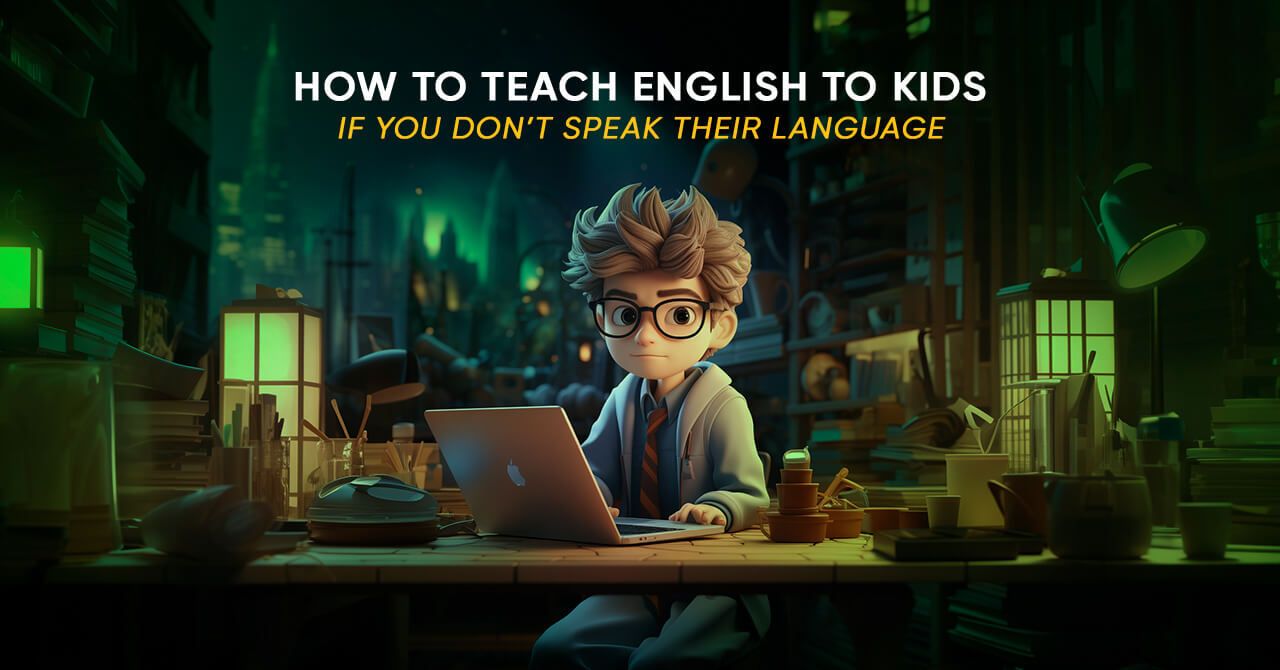
How Do I Teach English to Kids If I Don’t Speak Their Language?
Last year I taught a class for students who were new to the United States and who spoke very little to no English. Most of my students could say only their names and “hello.” In one class, I had students who spoke Spanish, Mandarin, Russian, Ukrainian, and Punjabi.
I didn’t initially think that teaching the class would be that difficult, but I was very wrong! Through observation, I realized that depending on a student’s first language (L1), they may or may not be familiar with the sounds and symbols in English. So my Spanish-speaking students had an easier time sounding out and pronouncing English words than my other students. If a language learner is trying to learn a language with a different alphabet and different sounds, that should be the starting point.
Start with the alphabet
If the alphabet and sounds are the same, then a good starting point could be basics like numbers, days of the week, months, colors, directions, shapes, etc. I had my students take notes of these basics in a composition book so that they could refer back to the information as needed.
Build sentences and teach spelling
Once they had taken notes on the basics, I had them start working through handouts that were designed to teach the parts of speech and the rules that governed their usage. For example, they constructed sentences with common and proper nouns and learned the rules for capitalization and pluralization. When working with the handouts, I had them translate each sentence using bilingual dictionaries (not electronic). They wrote the translations above the sentences, which also helped them learn spelling and punctuation rules.
Pronunciation
After they had translated, students would take turns reading the sentences aloud so that they could practice pronunciation. Some students felt pretty confident about their speaking skills and would readily share their sentences, but others were more reticent. I learned that some students needed more time than others before they felt comfortable speaking, and it was important not to push them too far outside of their comfort zone, or they would stop talking altogether.
Building vocabulary through reading
To help build vocabulary, I took my students to the library and had them check out books for silent, sustained reading. One of the best methods for acquiring vocabulary is to read, so I let students choose whatever texts they find interesting. The only requirement was that they choose a text that they could read for a sustained amount of time. They started with five minutes and eventually built up to 30 minutes.
We also read common texts to discuss literary elements. Eventually, students were able to engage in basic discussions about theme, plot, characterization, symbolism, etc.
Toward the end of the year, they were also able to write basic responses to literature and give brief presentations on a variety of topics.
I think the most important lesson I learned was that I needed to pay close attention to the responses I got from my instruction. If students seemed confused after a lesson or if they couldn’t demonstrate understanding at a later date, I tried a different approach or retaught to be sure that they had mastered each concept before we moved to the next concept.
I am from CANADA. I am 35 years old. I like to listen to music, watch movies, cooking, travel to different country, go swimming, and go walking.

